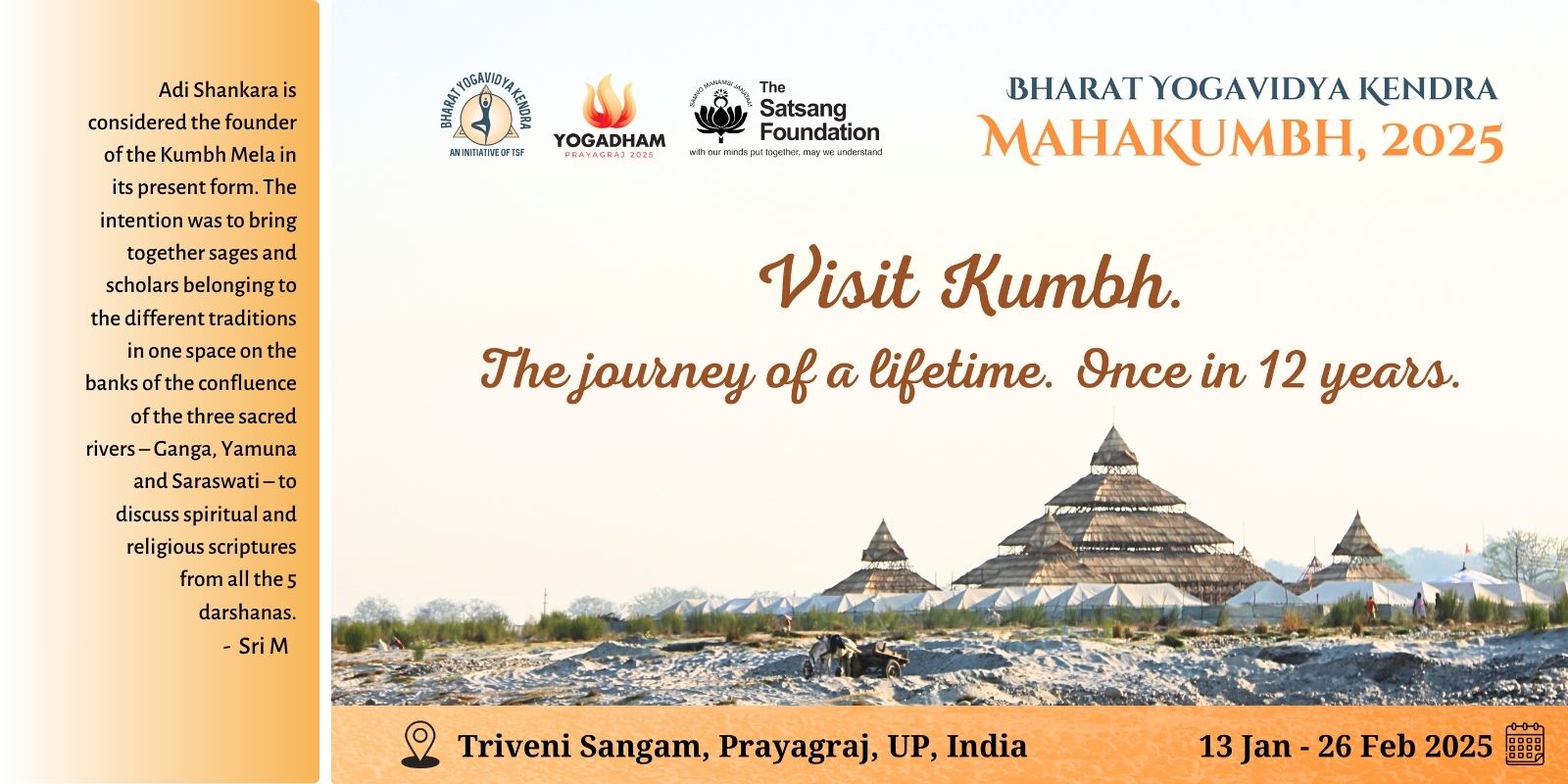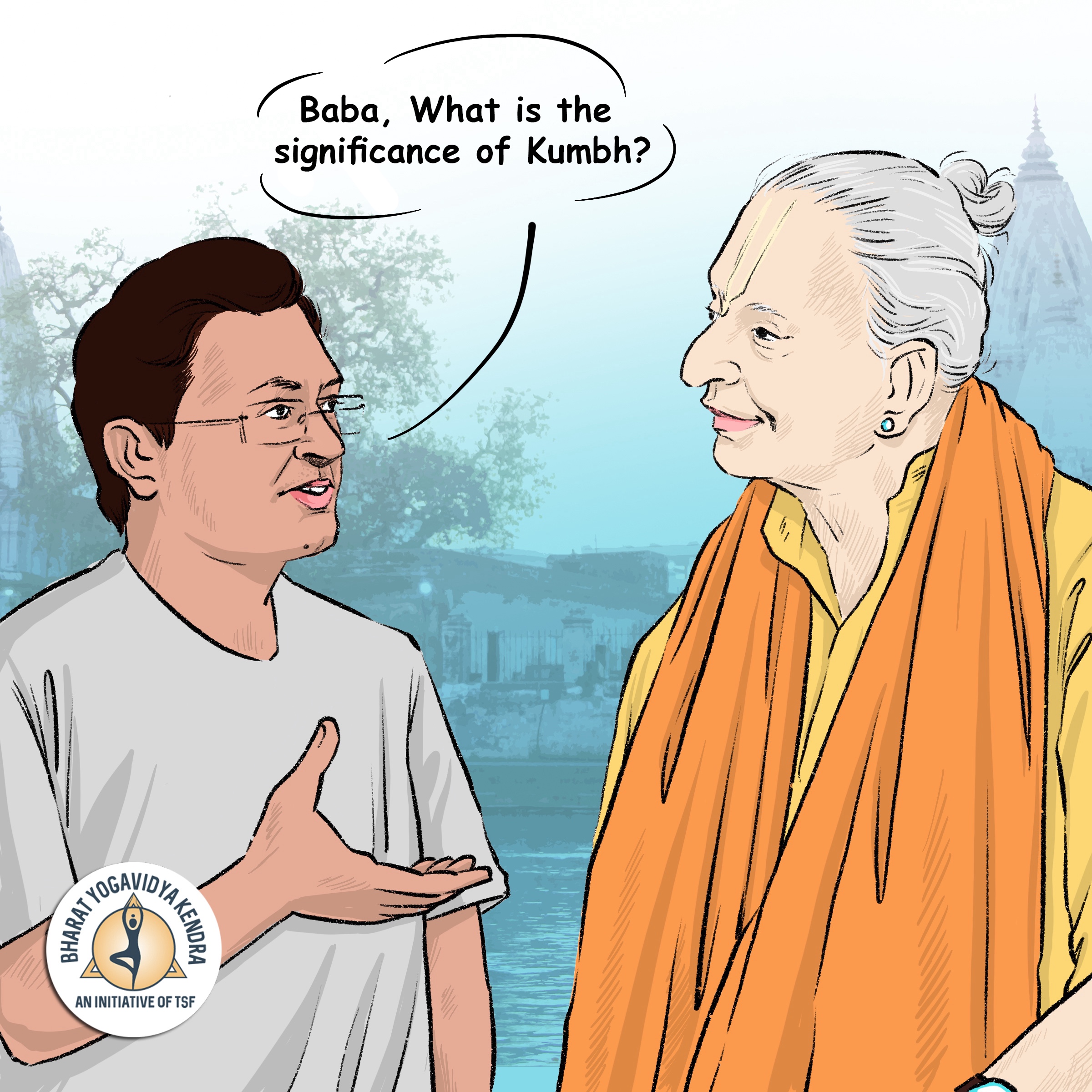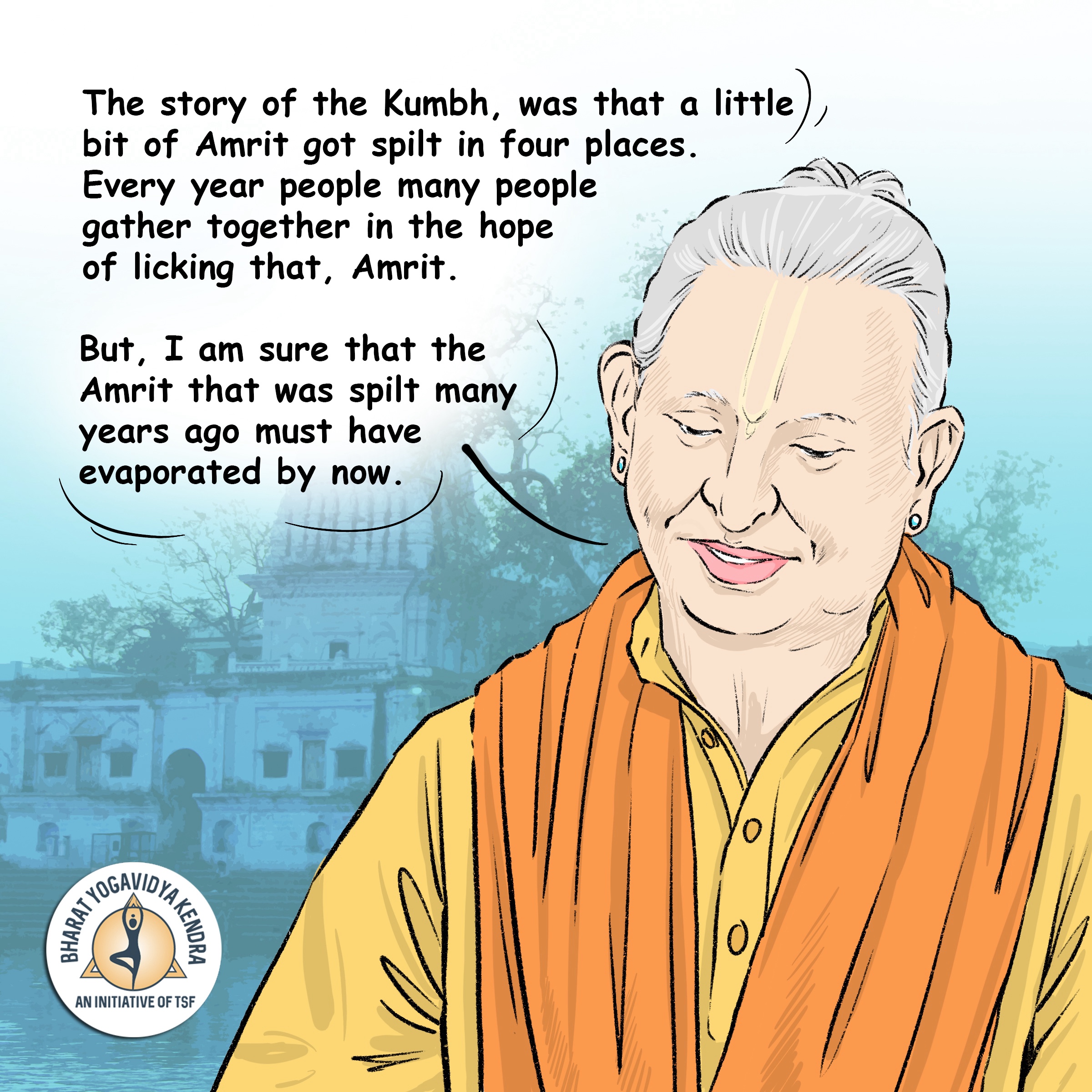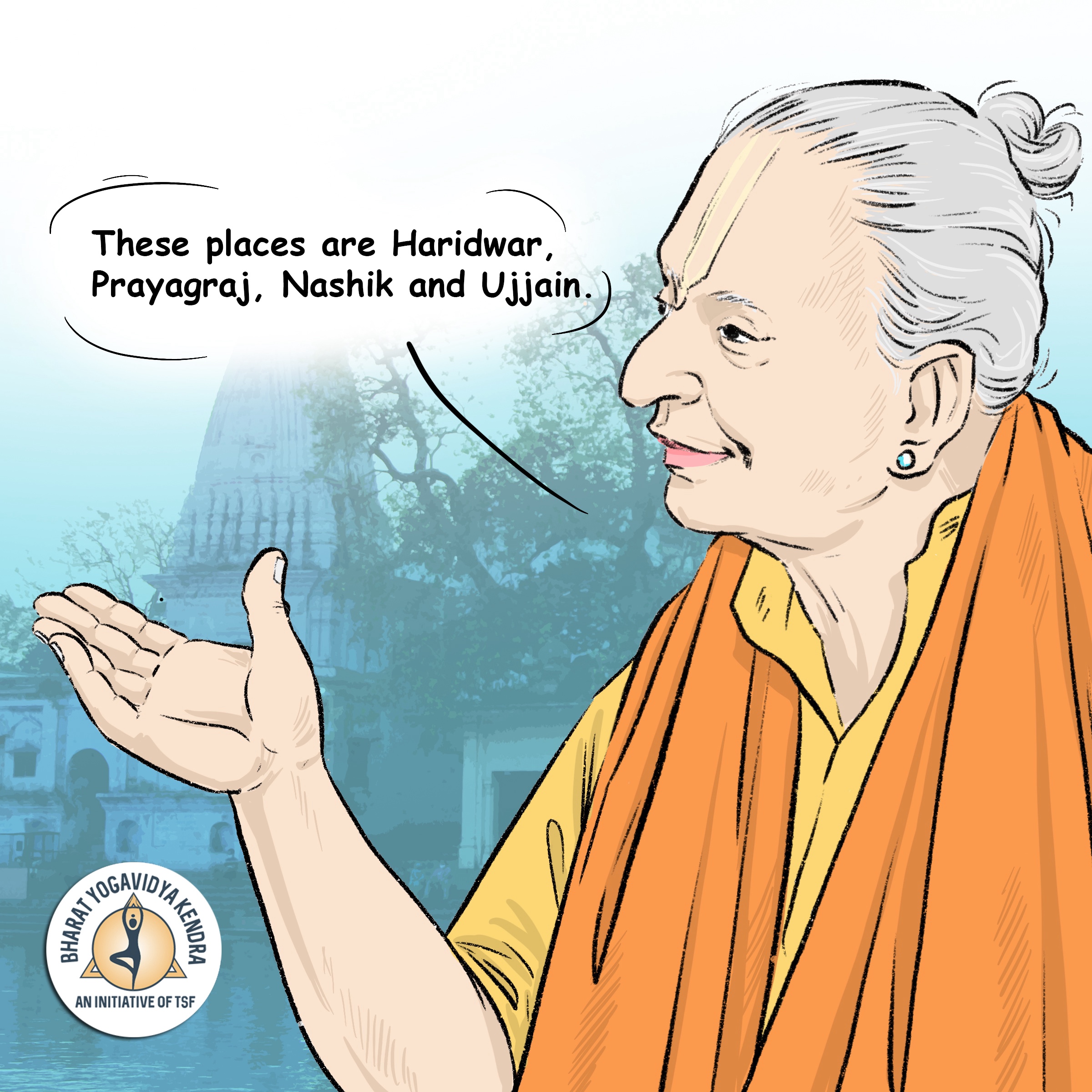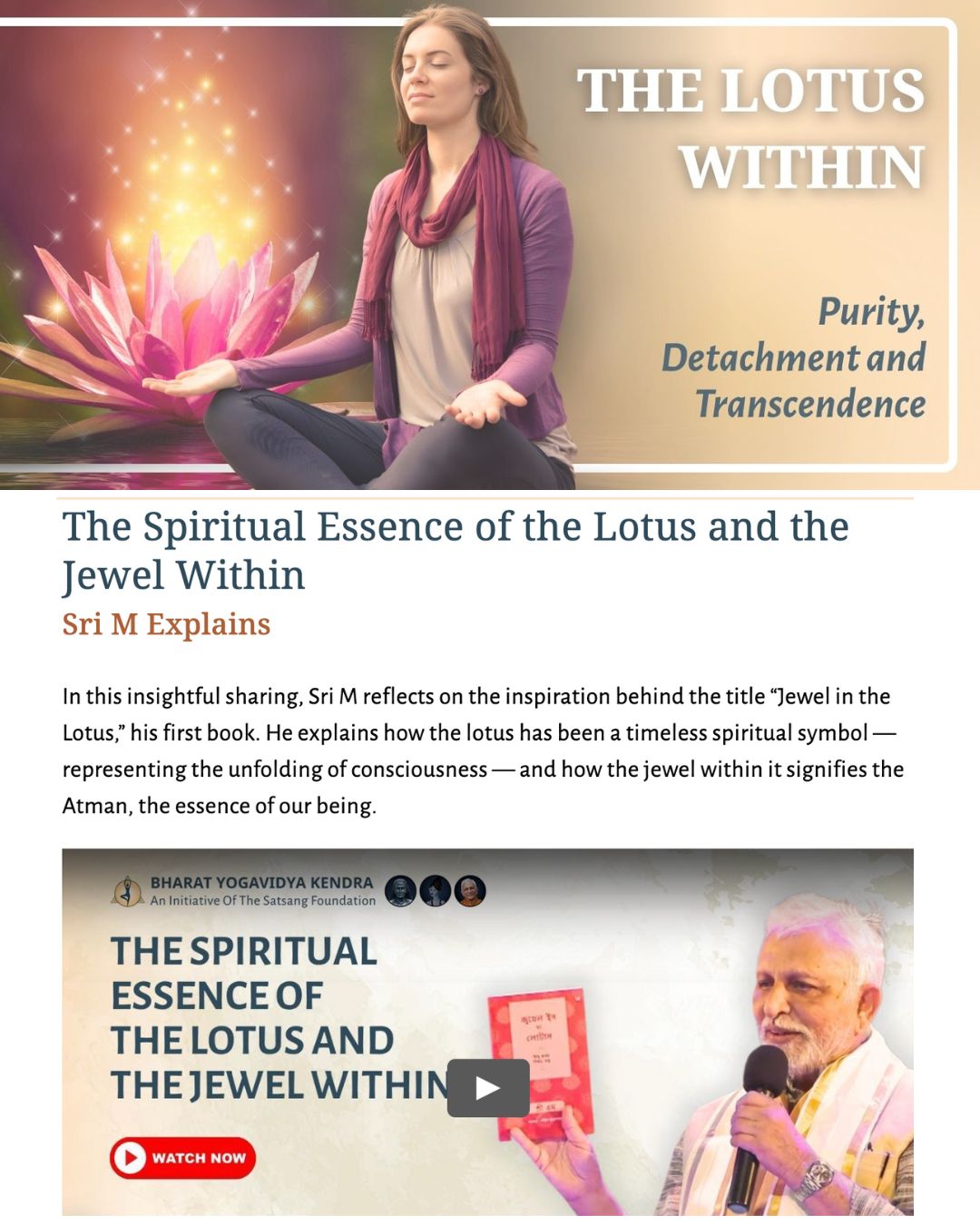The Spiritual Voyage:
Yoga and Sadhana at the Heart of MahaKumbh
Dear Readers,
In January 2025, Prayagraj will come alive with an event so rare that few in any generation ever get to witness it: the MahaKumbh Mela, a gathering of millions at the sacred confluence of the Ganga, Yamuna, and the mythical Saraswati.
Bharat Yogavidya Kendra (BYK) and The Satsang Foundation (TSF) are creating a space for us all at the MahaKumbh under the guidance of Sri M. Our akhada will be a sanctuary for all seekers, offering a place to learn and practice yoga, meet like-minded souls, along with accommodation and food. With everything from daily yoga practices, mantra chanting, and satsangs to dedicated time for Shahi Snan and the chance to meet sadhus from across India, we’re creating a space where you can safely immerse in the spirit of Kumbh.
Inside these pages, we’ve put together everything you need to know about Kumbh. What makes this sacred gathering relevant today? How can it offer something unique for each visitor, no matter their path?
What should you keep in mind if you’re planning to attend? We’ve got it all here, laid out in simple terms, with practical tips to help you make the most of this monumental event.
Kumbh is a place where everyone – from first-timers to lifelong spiritual seekers – is welcome. If you’re curious about taking a dip in the holy waters, attending a yoga retreat, or simply exploring, you’ll find that Kumbh has something profound to offer.
Our hope is that this special edition of Yogavidya helps you prepare for Kumbh with excitement and confidence. The MahaKumbh Mela 2025 is a chance to experience something extraordinary, an invitation to step into a world where devotion, wisdom, and community come together on the banks of the Sangam. So, plan ahead, join us, and let’s create unforgettable memories at this incredible gathering.
See you at the Sangam!
Warmly,
The Yogavidya Team
Yoga & Brahmavidya
Sri M Explains
Listen to Sri M explaining why Yoga Shastra is necessary to attain the Knowledge of Brahman.
Talk with M
BLOG POST
Kumbh – Not just a Mela
When faith intersects with astrology, something miraculous happens every 12 years along the banks of holy rivers or their confluence (Sangam) in four auspicious places. The Kumbh – An opportune time for a Sadhak to accelerate his journey.
Kumbh is derived from the word Kumbhak, which means a sacred container filled with the elixir of immortality.
As the Devas & Asuras churned the ocean, several divine objects and beings emerged. Finally, the divine pot (Kumbh) filled with the Amrita. The possession of this pot became a matter of conflict, as whoever consumed the nectar would gain immortality.
The divine bird Garuda took the pot. He did this to prevent the Amrita from falling into the hands of the Asuras. Garuda then flew away. In pursuit, the Asuras and Devas fought fiercely in the sky. During this pursuit, the chase lasted twelve divine days (equivalent to twelve human years). A few drops of Amrita fell on four places on Earth – Prayagraj, Haridwar, Nasik, and Ujjain. These locations are where the Kumbh is traditionally celebrated.
BOOK REVIEW
Human Consciousness : A Mind-Bending Odyssey
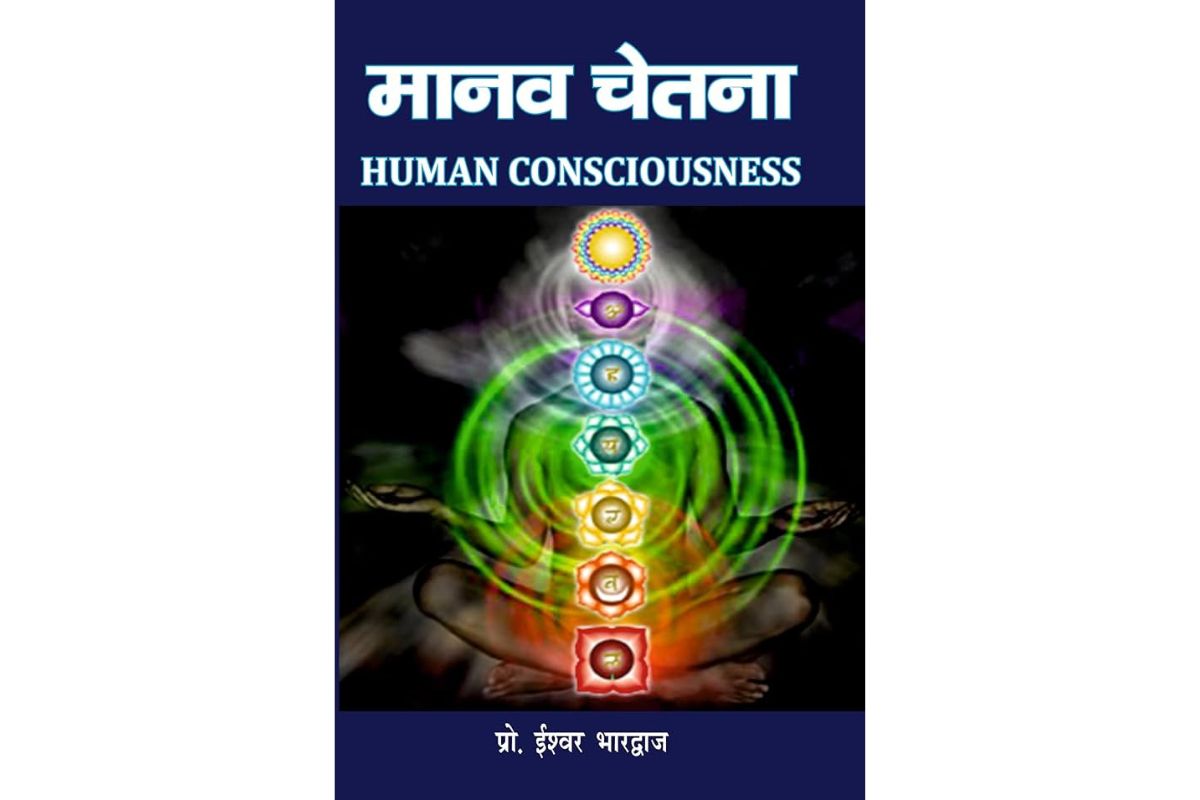
Have you ever wondered what it means to be conscious? To feel, think, and experience the world around us?Ishwar Bharadwaj’s Human Consciousness is a mind-bending journey into the depths of our own minds.
From the neural pathways that light up our brains to the philosophical questions that have puzzled thinkers for centuries, Professor Bharadwaj guides us through the labyrinth of consciousness with clarity and passion. His writing is so engaging, you’ll find yourself lost in thought, questioning everything you thought you knew about the human mind.
Whether you’re a seasoned philosopher or simply curious about the nature of reality, this book is a must-read. It’s a captivating exploration that will leave you pondering the mysteries of existence long after the final page.
YOGA GUIDE
Siddhasana (The Accomplished Pose)
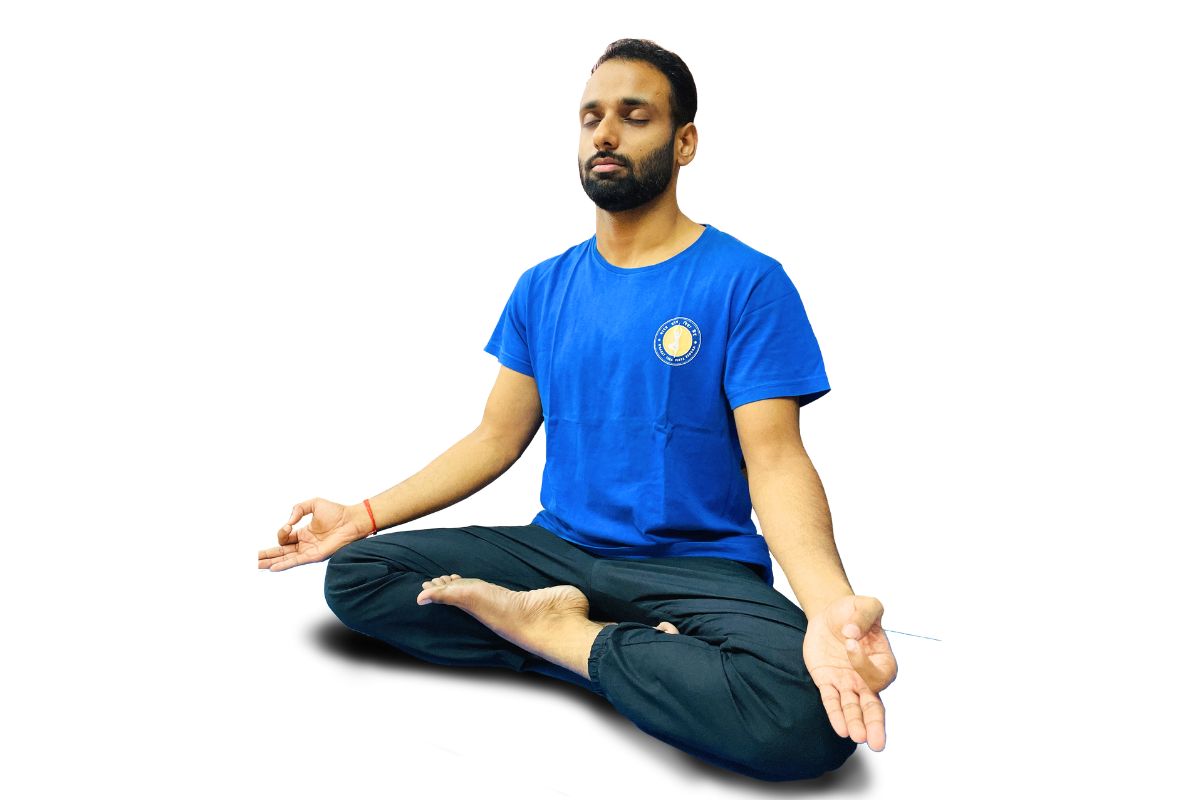
Siddhasana is one of the oldest yoga asanas and is mentioned in several early yoga texts, including the 10th century Goraksha Sataka and the 15th century Hatha Yoga Pradipika. In these texts, Siddhasana is described as one of the most important asanas, along with the Padmasana (lotus pose), and is said to open the way to liberation. It is also said to be the best asana for meditation and breathing exercises.
The asana is mentioned in the Hatha Yoga Pradipika 1.37– 45 calls Siddhasana “the king of all asanas” and “the opening of the door of salvation,” stating that the pose “cleanses the impurities of 72,000 Nadis,” or subtle bodily channels.
Benefits–
This pose aids a naturally elongated spine promoting optimal airflow and helping deep rhythmic breathing.
It helps maintain celibacy. Regular practice aids channel sexual energy and promotes self-control and balance.
Directs energy from the lower psychic centres upward through the spine, stimulating the brain and calming the nervous system.
Balances reproductive system and blood pressure
Did You Know?
What is Shahi Snan?
The Shahi Snan, or “Royal Bath,” is one of the most significant rituals at the Kumbh Mela. The Shahi Snan is believed to purify not just the body, but also the mind and soul, offering a profound sense of renewal.
MahaKumbh Key Snan Dates 2025:
- January 13: Paush Purnima – Full moon day marking the start of Kalpvasa, an intense period of spiritual discipline.
- January 14: Makar Sankranti – Sun’s sacred transition day, traditionally devoted to charitable giving.
- January 29: Mauni Amavasya – Most auspicious bathing day, commemorating sage Rishabh Dev’s sacred dip.
- February 3: Basant Panchmi – Honoring Goddess Saraswati’s arrival.
- February 12: Maghi Purnima – Sacred full moon when divine beings are believed to visit Sangam.
- February 26: Maha Shivratri – Final holy bath of Kalpvasis, deeply connected to Lord Shiva.
Alumni Reflections
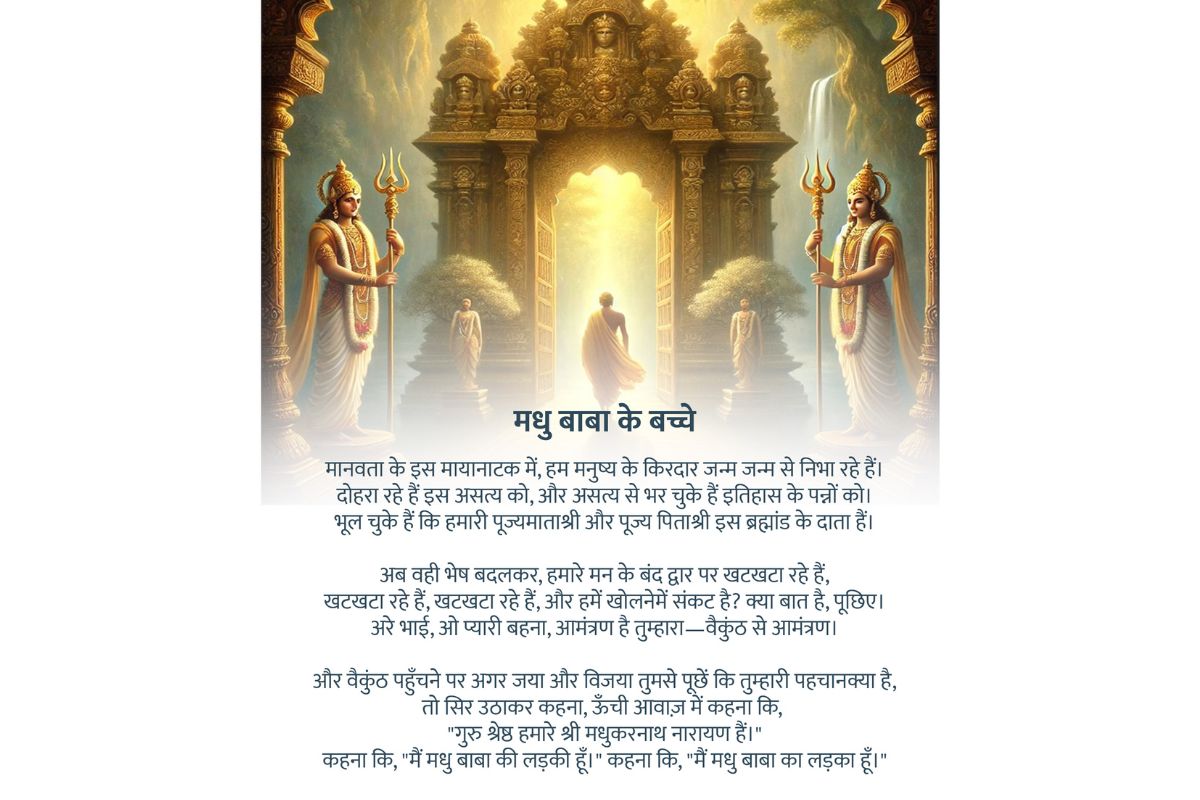
YOGA RESOURCE
Embracing Diversity and Community at Kumbh Mela Through Yoga

Imagine standing at the confluence of rivers, where millions gather in a vibrant tapestry of faith, culture, and spirituality. It’s here that the practice of yoga transcends individual experience, weaving together the collective essence of humanity.
As we reflect on the lessons from Kumbh Mela, let’s integrate the spirit of this gathering into our own lives.
Take a moment to sit quietly. Reflect on the following prompts and jot down your thoughts ina journal:
- What does diversity in yoga mean to you?
- How can you contribute to building a stronger community in your yoga practice?
- Recall a time when you felt a sense of belonging in a group. What did that experience teach you about connection and unity?
AYURVEDA WISDOM
Preparing for MahaKumbh with Ayurveda
To prepare mentally and physically for the MahaKumbh, follow an Ayurvedic approach focused on purifying and balancing the body and mind, preparing them for the intense sadhana. Here are specific steps to ready yourself in the next 2 months:
- Detoxification: Begin with gentle cleansing to purify the body’s systems. Consider a mild detox using Triphala at night, which supports digestion and elimination, or consult an Ayurvedic practitioner about a light panchakarma program. This will clear physical blockages and allow prana (vital energy) to flow more freely.
- Diet Adjustments: Transition to a Sattvic (pure) diet that includes light, easy-to-digest foods like fresh fruits, vegetables, and whole grains. Avoid overly spicy, oily, or processed foods, which can disturb the mind and body’s equilibrium. Consuming warm foods with mild spices (ginger, turmeric, cumin) helps maintain digestive fire (agni) during winter months.
- Abhyanga (Self-Massage): Daily oil massages using warm sesame or mustard oil are recommended. Abhyanga supports physical stamina, enhances skin health, and calms the nervous system, which is essential as you prepare for the vibrant energy of Kumbh Mela.
- Mental Clarity through Meditation: Gradually increase your meditation practice to 15–20 minutes each day. Try incorporating japa (repetition of a mantra) to stabilize the mind and attune it to higher frequencies. This is essential as Kumbh Mela offers intense spiritual vibrations that require a steady, receptive mind.
- Set Intentions and Reflect: Reflect on your purpose for attending the Kumbh Mela. Journaling or contemplating your intentions daily for the pilgrimage allows you to enter with a focused, open mindset, making your experience more profound.
SPOTLIGHT OF THE MONTH
Sri M and Yoga at MAHAKUMBH 2025
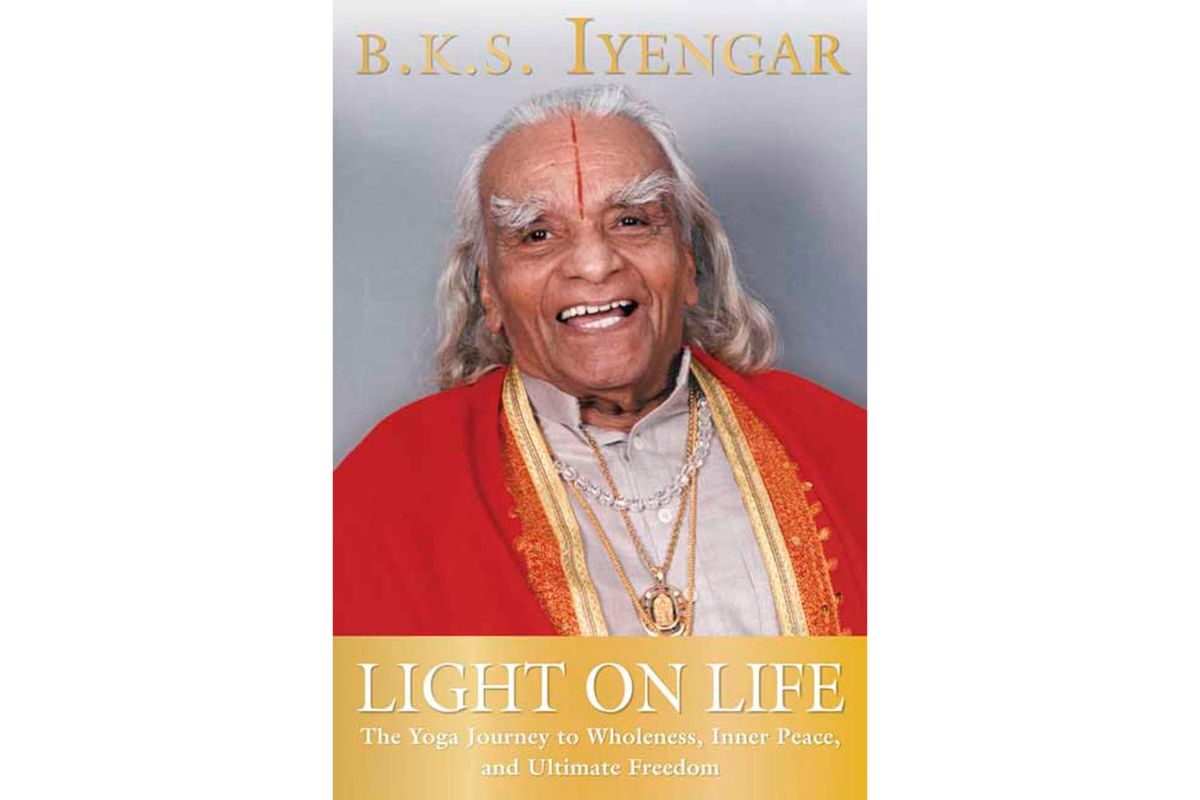
Upcoming Courses & Retreats
Yoga for kids

5 day camp to enjoy the spirit of Christmas, practice Asanas, pranayama, mindfulness activities and chanting.
Dates: 23rd- 27th Dec
Days: 5 sessions
Time: 5:00 – 7:00 PM IST
Fee: INR 1,500 | US$ 35
Mode: Online Via Zoom
This unique camp is designed to introduce children to the practice of yoga and meditation through playful asana routines, gentle breathwork, and engaging activities focused on mindfulness.
YOGA SANGHA reading MANDUKYA UPANISHAD
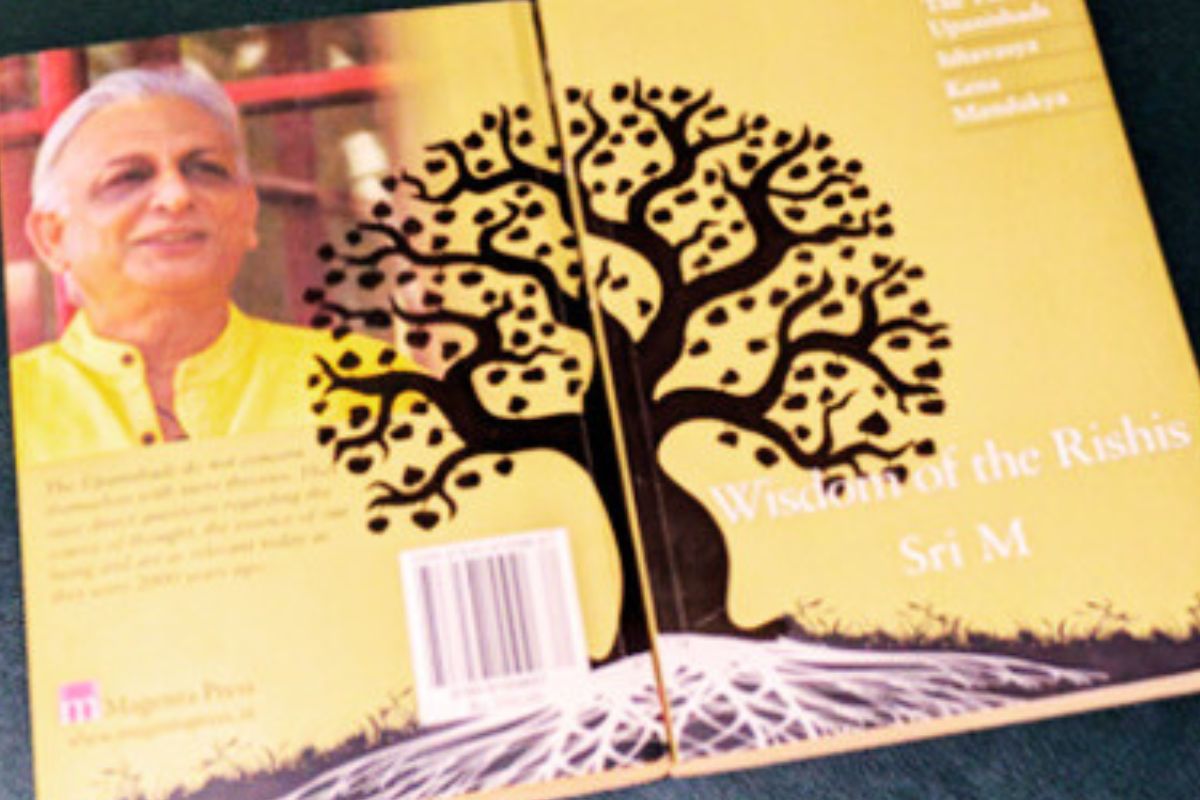
Dates: 3rd – 26th Dec
Days: Every Tue & Thurs
Total: 8 session
Time: 7:00 – 8:00 PM IST
Fee: INR 1,750 | US$ 42
Mode: Online Via Zoom
Join us on a journey diving deeper into the 4 states of consciousness i.e. the Waking State, the Dreaming State, the Deep Sleep and the Turiya.
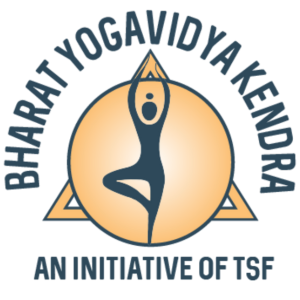
Thank you for reading

